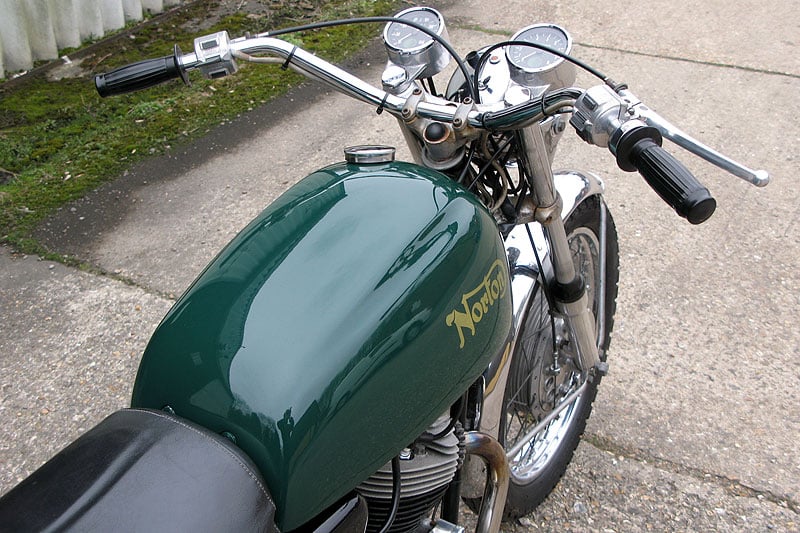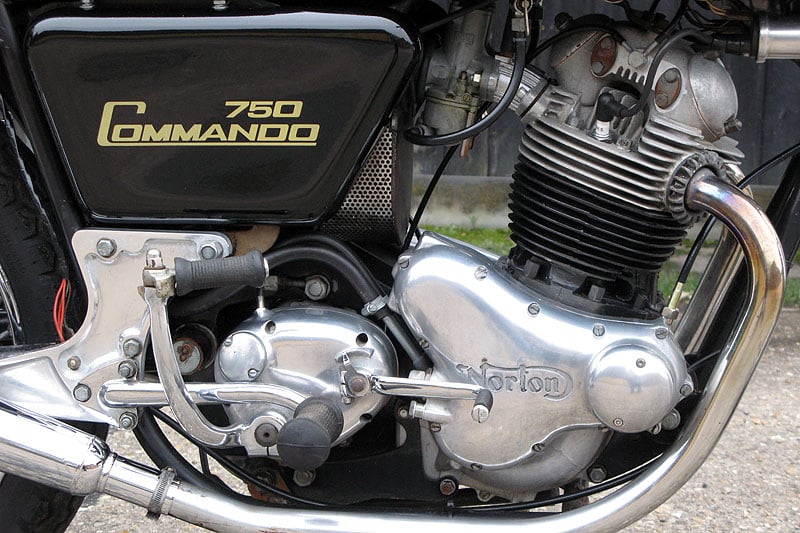With hindsight, the word 'commando' played a significant part in my childhood. For a start, I had those chunky-soled shoes with a compass hidden in the heel called Clark's Commandos; then there was my much-worn commando 'uniform' and, of course, my Action Man commando figure (no, it wasn't a doll).
But most important of all was my brother's jet-black Norton Commando which he used to ride around on, dressed in a bespoke white leather lounge suit which had extra-long arms designed to overcome the inelegance of having bare wrists while stretching for the handlebars. I was six and he was 21, and for what seems like the entire summer of 1970 the highlight of my day was listening to the thrap of the upswept, conical exhausts as he caned the stone-cold engine up the road in a hopeless attempt not to be late for work.


When the bike was dormant in the garage, I used to take every opportunity I could to go and look at it. Once or twice, using an Atco lawnmower as a mounting block, I even managed to climb aboard. I could choose between touching the footrests or reaching the handlebars and was amazed that anyone could actually control a machine which seemed so fearsome even when it was asleep. No wonder it was called Commando. Back then, the Commando was the bees' knees of bikes with a 58bhp engine derived from the old Atlas, super-cool looks and a genuine top end of 115mph.
What really set it apart from all the rest, however, was its Isolastic frame, a space-age sounding invention which basically meant the engine was supported by rubber mounts to absorb the teeth-shattering vibration inherent in an over-bored big twin. In fairness, there was a bit more to it than that, because the frame had an extra large spine which helped keep everything rigid and, with Roadholder forks and state-of-the-art Girling shocks, the Commando handled with true Norton panache. Fans with rose-tinted goggles said vibration was virtually eliminated; it wasn't, of course, but the ride was certainly smoother than anything previously experienced - so here was a great-looking British bike which was comfortable, handled, and went like stink.

The home market, meanwhile, got the unsuccessful Combat model which had flat handlebars and a more racey riding position - but the 'original' Commando was the oddly cool Fastback, the only version available for the first two years of production, from '67 - '69. Most of us associate the word 'fastback' with slope-roofed cars such as Bullitt Mustangs, but Norton's interpretation involved adding an elongated tail unit behind the seat, which itself extended along the sides of the fuel tank. Designer Bob Trigg's intention was probably to make the bike look sporty and modern, but many people thought it just looked wrong so, in 1969, the more conventional-looking Commando Roadster was offered alongside the Fastback, upgraded in 1971 as the 'Fastback Long Range' (bigger petrol tank) and, a year later, as the Fastback MKIV (Combat engine).
Now, of course, the Fastback's quirky styling only adds to its collectability and many Norton aficionados say it's the only one to have...
|
Related Links Further details about the Norton Commander Fastback shown here can be found in the : Classic Driver Marketplace. |
Text: Simon de Burton
Photos: Godin Banks / Norton






